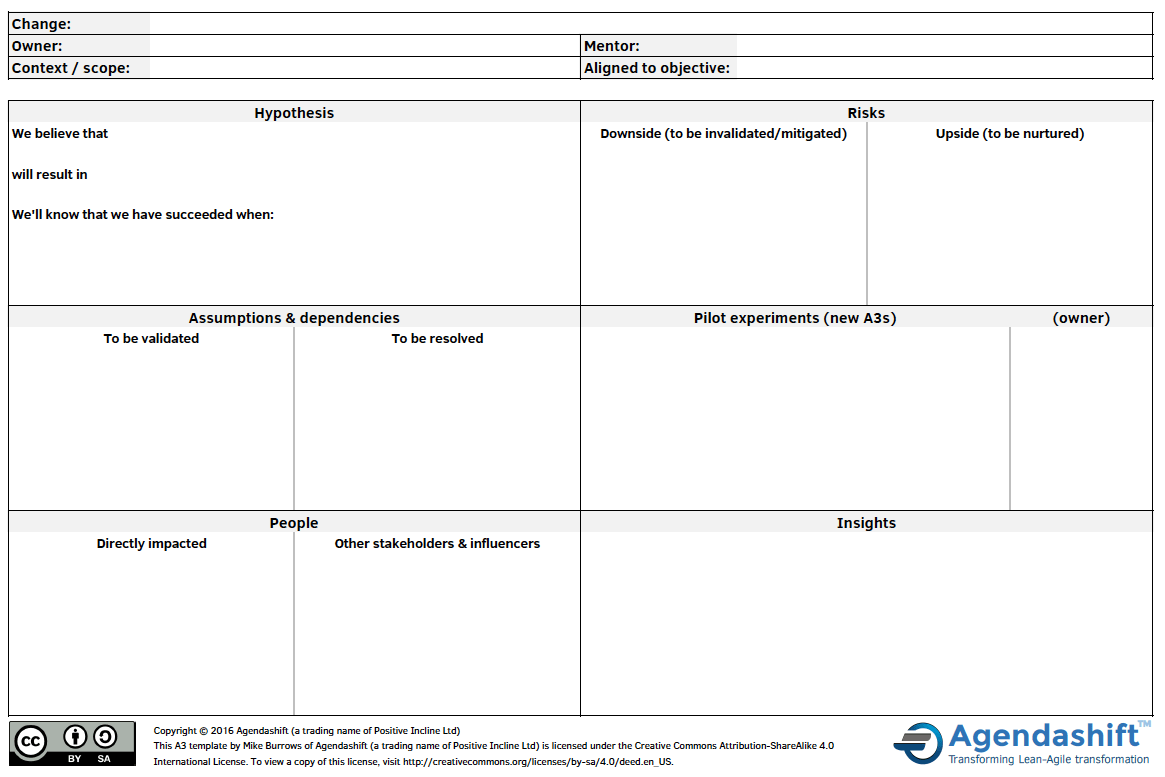

And if anyone wants to do an A3 with me, I will be running the Lean course again in Oslo in November. If anyone tries using these reports please let me know what you think and what your results are. They look odd to manager schooled in long report and PowerPoint reports, they require a depth of thinking they are not accustomed to and they look funny. Most of the time, if you are going to ask someone to do an A3 you need some position of respect, or at least authority. I recently experimented with A3 formats on a coaching assignment with a client. Having shepherded many pattern papers – and won a couple of awards for it, I might say – the A3 mentoring process seems exactly the same.īack in the Oslo classroom I learned: allow plenty of time for the A3 report writing.

This sounds just like the shepherding process that any pattern paper being present at a conference goes through. This is a case study of a program in trouble, and how the Lean A3 Process is used to save it. More importantly, a key element of A3 reports is the mentoring of A3 writers that occurs during the creation process. One thing that struct me while reading Shook’s description of A3 is their similarity to patterns: both involve a context, a problem, the things that make the problem hard (forces or analysis), both propose a better way (solution or counter measures), both value brevity and both allow the authors to change the format to suit the problem. For a shorter version check out Shook’s article in the MIT Sloan Management review, “Toyota’s Secret: The A3 report”. If you want to know more about A3 reports John Shook’s book “Managing to Learn” is good, although you have to order it from the Lean Enterprise Institute, its not at your local online bookshop. The process of creating the report, the observation, investigation and mentoring, is probably more important than the end result. The A3 report is not just a thing, it is a process. My templates are what I think are the key elements.īut the actual A3 report, the thing you can see is only half the story. It turns out that you can just start with an blank sheet of A3 paper, but it also seems there are some standard elements and structures people use when writing an A3. This confused me when I first started digging into the A3 method: I was looking for templates. Strictly speaking there isn’t a specified A3 format. This is the template to use for real outside the classroom.

In a classroom you can’t actually go and see the issue, you can’t talk to the people performing the task or check the company data.
A3 PROJECT MANAGEMENT TEMPLATE SOFTWARE
The SIPOC is one tool that can be used to populate the current conditions section of an A3.ĭownload the A3 problem-solving template.As I mentioned last time, I recently delivered a course on Lean software development in Oslo. In this template you’ll find, space and key questions to answer about major components of an A3: background, current conditions, targets/goals, analysis, proposed countermeasures (another term for interim solutions), implementation plan, and follow up. It is effective in helping keep the team focused on a specific problem and goal, provide updates to sponsors, ensure data is collected to test hypotheses and dig for root causes and provide an overall plan for implementation. In the process improvement world, it is the name for a one-page problem-solving tool that captures the background, current state or condition of the process, and proposed improvements.Ī3 development often occurs after issues are unearthed using the Eight Waste Check Sheet and after the team has developed a Project Charter.Ī3s help teams develop and communicate the thinking behind their process improvement and is filled in and revised all the way through the project-not at the end. On a literal level, A3 refers to an 11×17 piece of paper.


 0 kommentar(er)
0 kommentar(er)
